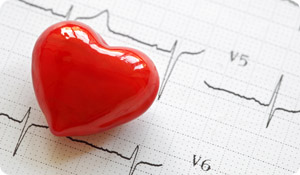
Although these terms are often used interchangeably, a heart attack, or myocardial infarction, is not the same as cardiac arrest. Here’s how to tell the difference, and what to do if either occurs.
A heart attack, or myocardial infarction, occurs when blood flow to the heart is interrupted. This can happen when there’s a blood clot or blockage from built-up plaque (a deposit of cholesterol and substances) in an artery, one of the vessels that carries blood from the heart. Cardiac arrest occurs when the heart rhythm becomes chaotic and the normally organized contraction of heart muscle is lost; blood is no longer pumped and the heart suddenly stops beating.
Both myocardial infarction and cardiac arrest can result from preexisting coronary (heart) artery disease, and a myocardial infarction can increase your risk of cardiac arrest. Both are life-threatening conditions, because they prevent blood from being pumped through the body.
Heart Attack
Otherwise known as myocardial infarction, a heart attack resulting from artery blockage is often preceded by chest pain or other warning signs several hours before the actual attack. Artery blockage cuts off the blood supply to the heart muscle, which then dies from lack of oxygen. While some heart attacks are severe enough to be deadly, some are mild enough to go unnoticed and are picked up another time during the course of routine medical exams.
The symptoms of myocardial infarction include
- Pain in the middle of the chest that spreads to the jaw, arms, or back, or in the stomach, where it can be mistaken for indigestion. Women and anyone over 75 can have a heart attack but feel no chest pain at all.
- Nausea
- Sudden sweating
- Shortness of breath
- Heavy pounding of the heart
- Abnormal heart rhythms
- Loss of consciousness
- Anxiety
- Blue lips, hands, or feet from the disruption of blood flow
In you experience symptoms of a heart attack, call 911 immediately; it is best to get to the emergency room in an ambulance equipped with lifesaving instruments and trained medical technicians. If a blockage is not treated soon after symptoms appear, areas of heart muscle begin to die and are replaced by scar tissue that can cause further and even more severe problems.
Cardiac Arrest
Unlike myocardial infarction, cardiac arrest occurs suddenly, with no warning signs. The known causes of cardiac arrest include
- Ventricular fibrillation, a rapid and irregular heart rhythm in which the lower ventricles (chambers of the heart) beat so quickly that they cannot fill with blood, causing circulation to stop
- Ventricular tachycardia, a rapid heartbeat which leads to ventricular fibrillation
- A sudden drop in blood pressure
- Dehydration
- Mineral imbalance in the blood
- Respiratory arrest
- Choking
- Drowning
Cardiac arrest can also have unknown causes.
The symptoms of cardiac arrest include
- Loss of breath, pulse, or consciousness
- Twitching muscles
- Chest pain
- Weakness
- A pounding sensation in the heart
- Feeling faint in the weeks leading up to cardiac arrest
In the event of cardiac arrest, immediately call 911 for emergency medical services. If possible, begin treatment immediately with an automatic external defibrillator to provide electric shock to the heart.
"The shock of defibrillation brings all the electrical activity in the heart to a stop so that normal rhythm can resume," explains William A. Tansey, III, MD, a cardiologist at the Summit Medical Group in NJ. "It’s like when the rhythm of music stops, dancers stop dancing, and when the music returns, the dance resumes."
If a defibrillator is not immediately available, CPR (cardiopulmonary resuscitation) with chest compression can keep blood flowing to the brain and body. Immediate treatment—within six minutes of arrest—can improve the chance of survival and help prevent permanent damage to the heart and brain.
William A. Tansey III, MD, reviewed this article. http://www.summitmedicalgroup.com/doctor/wtansey/
Sources
Tansey, William A. III MD. Email message to author. October 20, 2014.
"Heart Disease." National Heart, Lung, and Blood Institute. Last modified November 17, 2011. http://www.nhlbi.nih.gov/health/health-topics/topics/hhw/heartdisease.html





